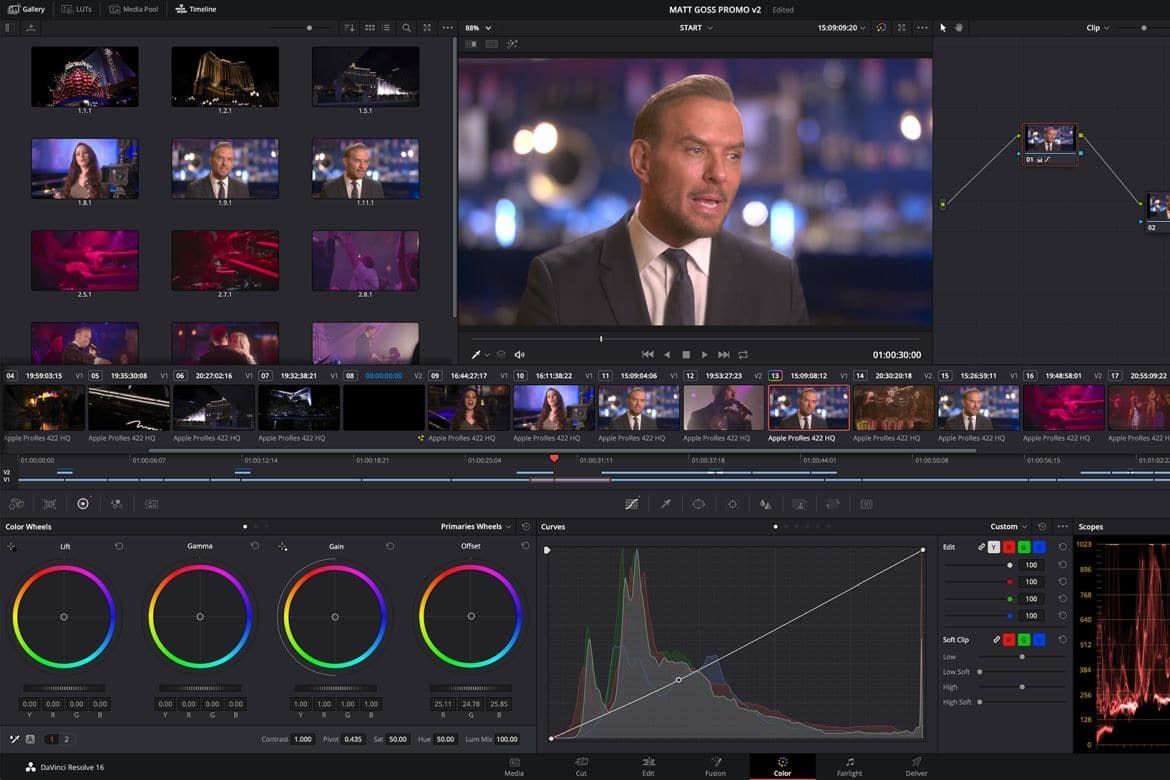

DaVinci Resolve free version supports end-to-end functionalities like editing, color grading, sound design, visual effects, etc, all in a single platform! Is DaVinci Resolve Good for Beginners?ĭaVinci Resolve is a VERY GOOD CHOICE for beginners who want to become social media content creators (YouTube), aspiring filmmakers or editors, or colorists. So first get yourself clear with where you belong.

Someone who will need a tool for their creative needs or casual editing?.a Youtube/Instagram or other social media content creator, Or.Going to make a career out of Editing or Color-Grading, Or.Thinking of becoming a filmmaker who is starting from the scratch, Or.If you’re editing on a laptop or something with a mediocre GPU, then working in Resolve is likely to leave you frustrated.Before we decide if DaVinci Resolve is good for beginners, we have to make sure what kind of beginner you are.

That’s not to say it can’t perform well, especially when you use optimized media, but in general, Resolve is far more demanding of your computer’s resources than Premiere. Can your computer handle it the switch from Premiere to DaVinci?Īs Dave mentions in the video, Resolve has some quirks when it comes to higher resolution media and certain codecs. Of course, Resolve has its own integration with Fusion, Blackmagic’s super powerful node-based compositing and VFX software, but it’s nowhere near the level of fluidity and ease of use as Dynamic Linking between Premiere and After Effects. The same can be said for Premiere’s integration with Audition.

The linking between Premiere and After Effects is pretty awesome, and it can be a major time-saver. If you’re heavily invested in After Effects, then making the switch to Resolve doesn’t make a whole lot of sense. Not only is the free version already more powerful than most people will ever need, but the paid version is one that you actually own. So Resolve makes a lot of sense in this regard. Sure, it enables Adobe to develop its software more actively thanks to the recurring revenue model, but it makes little sense for people who prefer actual ownership of their software or for people who use the software infrequently. Really nobody I’ve ever talked to likes paying $50/month for the Creative Suite. But there are quite a few other things to keep in mind if you’re thinking about making the switch yourself. That reasoning makes a lot of sense, particularly for Dave’s s-log workflow or for anyone who works with tricky log formats like that on a regular basis. Because he shoots with the Sony A7sII and A7RII, Dave works with s-log footage quite a bit, and Premiere Pro’s color tab - despite all of its fun upgrades in the past year or two - just doesn’t offer the same speed or flexibility as Resolve when it comes to grading s-log. As Dave says in his video, the primary reason that he switched is that it just makes more sense for his particular workflow.


 0 kommentar(er)
0 kommentar(er)
